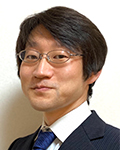- HOME
- Research
- Research Category
- Quantum Materials ScienceSeki Shinichiro Laboratory
Quantum Materials ScienceSeki Shinichiro Laboratory
Next generation of electronics and quantum technology based on materials with nontrivial geometry
Our group develops novel electronic and spintronic functions through the exploration of new materials with nontrivial topology and symmetry.
Usually, the behavior of electrons is controlled by the external electric and magnetic fields. On the other hand, in materials with topologically nontrivial orders, electrons feel giant “emergent” electromagnetic fields due to the curved geometry, and their effective use can dramatically change the way to control electron dynamics.
We design and synthesize new material systems to realize such unique quantum phenomena. By employing the state-of-the-art crystal growth and micro-fabrication techniques, we develop novel electronic functions potentially suitable for various applications such as information processing with ultra-low energy consumption or information detection with ultra-high sensitivity.
“Third class of magnetic material” — Altermagnet
In existing magnetic memory devices, information is stored using the “↑” and “↓” spin states in ferromagnets (i.e., “permanent magnets” ), where spins are aligned in parallel. Meanwhile, antiferromagnets, another well-known class of magnetic materials, feature antiparallel spin alignments. The antiferromagnetic spin states “↑↓” and “↓↑” overlap completely upon lattice translation, making it impossible to distinguish between them macroscopically and, as a result, antiferromagnets have long been considered unusable for magnetic information storage
However, recent studies have revealed that when an antiparallel spin arrangement is combined with a specific atomic configuration, the “↑↓” and “↓↑” spin states can be distinguished from one another. This new class of magnetic material is called an “altermagnet” and is attracting significant attention as a promising candidate for next-generation information storage media.
Our laboratory has succeeded in discovering the world’ s first room‑temperature altermagnet that allows information to be both read and written. By advancing the design and functional understanding of this “third magnetic material,” we seek to realize an entirely new paradigm for information processing — one that is ultra‑high‑density, ultra‑low‑power, and ultra‑high‑speed.

Examples of geometrically nontrivial orders

Altermagnet ("third class of magnetic material")
While there are only about 90 naturally occurring elements, the possible combinations and arrangements of these elements are virtually limitless. To date, only a small fraction of such materials have been thoroughly studied. The behavior of electrons in materials is governed by quantum mechanics, and with careful design, materials can sometimes exhibit groundbreaking phenomena and unexpected functionalities
As seen in the Industrial and Information Revolutions in history, new insights emerging from the fusion of physics and engineering have repeatedly transformed human society at a fundamental level. In our laboratory, we aim to pioneer such paradigm-shifting advances by discovering innovative materials that are both fascinating and practically useful.
Member

-
- Professor
Shinichiro SEKI
Research Area: Condensed Matter Physics - Professor
Laboratory Homepage
Tags

